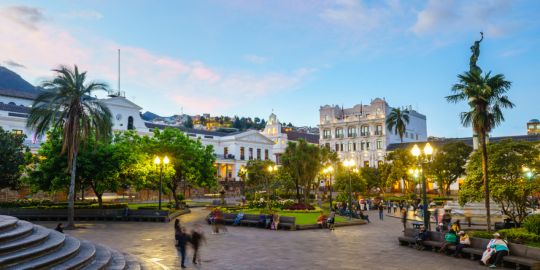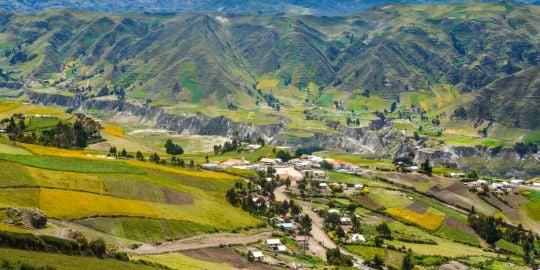Hello everyone,
Which city or area do you live in in Ecuador, and how do you find the traffic?
How long does it take to commute to work or run errands?
Is there a rush hour in your city? What times of the day would you recommend people to avoid driving if they can?
Are there any ways to avoid spending too much time in traffic in Ecuador?
What is parking availability and cost like?
Thank you for sharing your experience.
Priscilla
Traffic in Ecuador
Traffic in Quito is insignificant for the most part. There are specific areas that can be congested but in general it pales in comparison to many cities around the world including our neighbor capital cities of Bogota and Lima. This point is evident if one simply Googles “Quito/Bogota/Lima traffic”, and a traffic map appears with updated data represented by colors ranging from green, moving traffic, to dark red, congestion.
We do have rush hour which is noticeable between 5-7 PM. The most notable traffic is during the summer months especially July and August, as this is the time that many civil servants take their extended vacations. It is also exasperated by hordes of local tourists from other provinces as well as Ecuadorians from abroad who also flock to Quito.
Right this moment is rush hour, and it's obvious how little traffic there is, and with red lines (on online map) being mainly around centro histórico, an area with narrow streets, and one designated a heritage cite by the UN.
Are there any ways to avoid spending too much time in traffic in Ecuador?
In Ecuador we have several ways of inter-city travel by road. One of the most popular is by bus, but I seldom use them because from Quito to go to many other cities I would have to use Quitumbe station which is in south Quito and would need at least an hour if not more by public transport and about $12-$13 by taxi.
So my preference is a taxi service that takes you puerta a puerta (door to door) from city to city. So for instance to go to Santo Domingo (the city which is a gateway to the coast) I would use such service,
And the relevance here is that it is much quicker because while the distance is not much from Quito to Santo Domingo the roads are at many points are single lane and quite winding (zigzag.
So even if there is very little traffic, if a big truck is ahead of you and is going slow it's much easier for these puerta a puerta taxis to change lanes thus saving you time in such traffic situations.
I however do not recommend this service for the fainthearted because there are close calls as they change lanes. I also don't recommend it if you are not comfortable being very close to people because you will bump into other passengers if you're sitting in the back which usually has 3 passengers.
But it's a great way to interact traveling locals, and definitely get's you quicker to your destination.
Everybody wants to be a racing driver.If you have a car have a camera recording your trip.
Public transport is cheap but try and travel by day if you can.I have traveled a lot at night and have been lucky and have not been robbed!Good luck eh 
Hi Priscilla interesting question. I live in Cuenca and the traffic is depending upon where you're at and what time of day is there. Some of the main streets can get quite busy in the morning between 7 and 8:30 and between 3:30 and 6 p.m. I avoid traffic why avoiding travel on the streets during those hours. For me it is easy for those who have to take the bus it's not much faster there are red express buses here but they still have to stop for traffic. I have devised a clever method to get around the traffic here in Cuenca. First thing you do is you retire. Yes retired quit your job and then you eliminate the traffic and you can work around it due to the fact that you have a lot more free time. I have managed to have been retired now for 2 years and I say that it must be the one of the few things in life that are highly underrated. Being retired is a pleasant and enjoyable experience. So that's how I have to either they can take public transportation but if the traffic is stopped nobody gets through. First and foremost and take it easy. I hope that answers your question.
Chao Ramon
Traffic growth in Cuenca said to be unsustainable.
The growth of traffic in the city is four times the
growth of the population, up 7.2 percent
since last year.
That is unsustainable, according to Daniel Orellana,
a professor at the U. of Cuenca.
Cuenca needs solutions to its overabundance of cars
such as a mobility and transport system that is
reliable and safe, according to Professor Orellana.
Source... El Mercurio (Saturday) as e-pubished
Priscilla initiated this thread concerning traffic in Ecuador on November this 7, 2017, or a little bit more than five years ago. Much has happened since her question.
My mother-in-law, sister-in-law, and I live in the Sector La Magdalena in the south of Quito. We took a taxi to Centro Norte for doctors' appointments this morning, leaving home around 8:30. Traffic was fairly congested. However, it was returning home this afternoon around 4 o'clock when the traffic was very, very bad. It was stop-and-go many times and for long periods of time.
Thank God the stops weren't because of accidents. They were because of so many vehicles on the roads. Many times intersections were jammed because the stop signals aren't able to accommodate so many vehicles and the intersections got blocked. Also, many were making left turns where there are no left turn arrows.
I didn't check maps of Quito, comparing to Bogotá and Lima as did one who responded five years ago to Priscilla's question. However, these two metro areas have much greater populations than Metro Quito and assuredly, for this reason, would have much greater problems with traffic than anywhere in Ecuador.
The Quito Metro is supposed to begin operations in December of this year after years of delays. The jury will be out for awhile once Metro starts serving people here in the federal capital. Hopefully, however, traffic will noticeably lessen, if urban planners were accurate when a Quito Metro System was first put on the drawing boards many years ago.
In 2014, on the day my attorney and I were picking up my first-time cédula, Metro promoters were handing out flyers in North Quito announcing progress on Metro construction.
When I asked one of these promoters when the Metro would start service, he was ready with the answer: 2017.
--
Moral: don't take at face value anybody's prediction about when Metro service in the capital
will supposedly begin.
cccmedia in Quito
@cccmedia
My sister-in-law said the Quito Metro begins service "in December." I asked what year. . . .
Better question, What decade?
Yeah, decade is more accurate!









